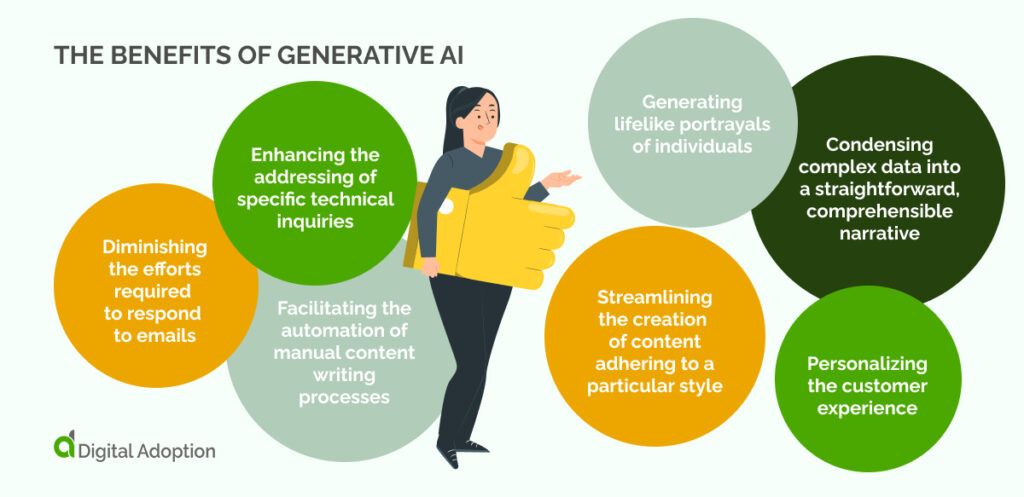Featured
The majority of AI business that train huge versions to create text, photos, video clip, and sound have not been transparent regarding the material of their training datasets. Different leaks and experiments have disclosed that those datasets consist of copyrighted material such as publications, news article, and flicks. A number of suits are underway to establish whether use of copyrighted product for training AI systems comprises reasonable use, or whether the AI firms require to pay the copyright owners for usage of their product. And there are of program many classifications of bad stuff it might theoretically be used for. Generative AI can be used for customized frauds and phishing assaults: For instance, utilizing "voice cloning," fraudsters can copy the voice of a particular individual and call the individual's family with a plea for aid (and money).

(Meanwhile, as IEEE Spectrum reported this week, the U.S. Federal Communications Compensation has reacted by forbiding AI-generated robocalls.) Photo- and video-generating tools can be utilized to generate nonconsensual pornography, although the devices made by mainstream companies disallow such usage. And chatbots can in theory stroll a prospective terrorist through the actions of making a bomb, nerve gas, and a host of various other horrors.
Despite such possible troubles, many individuals assume that generative AI can likewise make people more productive and could be made use of as a tool to make it possible for totally brand-new kinds of creative thinking. When offered an input, an encoder converts it into a smaller sized, extra dense depiction of the information. What is the Turing Test?. This pressed depiction protects the info that's needed for a decoder to reconstruct the original input information, while discarding any irrelevant details.
This allows the user to quickly sample brand-new hidden representations that can be mapped through the decoder to create unique information. While VAEs can create results such as photos much faster, the photos generated by them are not as detailed as those of diffusion models.: Uncovered in 2014, GANs were taken into consideration to be one of the most frequently used methodology of the 3 before the current success of diffusion models.
Both models are trained with each other and get smarter as the generator generates much better material and the discriminator gets much better at spotting the generated material - Generative AI. This treatment repeats, pressing both to continuously improve after every model until the generated material is identical from the existing web content. While GANs can give top quality examples and generate results promptly, the example variety is weak, consequently making GANs much better matched for domain-specific data generation
What Is Multimodal Ai?
: Comparable to recurrent neural networks, transformers are created to refine consecutive input data non-sequentially. Two devices make transformers specifically proficient for text-based generative AI applications: self-attention and positional encodings.

Generative AI starts with a foundation modela deep discovering design that acts as the basis for several different sorts of generative AI applications. One of the most usual foundation designs today are huge language models (LLMs), developed for message generation applications, yet there are additionally structure models for picture generation, video clip generation, and audio and songs generationas well as multimodal structure designs that can sustain numerous kinds web content generation.
Discover much more regarding the history of generative AI in education and terms related to AI. Discover more concerning how generative AI functions. Generative AI devices can: React to motivates and inquiries Develop images or video clip Sum up and synthesize details Revise and edit content Generate imaginative jobs like musical compositions, tales, jokes, and rhymes Write and remedy code Adjust data Produce and play video games Capacities can differ substantially by device, and paid versions of generative AI tools commonly have actually specialized functions.
Generative AI tools are constantly discovering and developing but, as of the day of this magazine, some constraints consist of: With some generative AI devices, consistently integrating genuine study into message continues to be a weak performance. Some AI devices, for instance, can create text with a recommendation list or superscripts with links to sources, however the references often do not match to the text developed or are fake citations made of a mix of real magazine information from numerous resources.
ChatGPT 3.5 (the complimentary variation of ChatGPT) is trained making use of data available up till January 2022. ChatGPT4o is educated utilizing data readily available up until July 2023. Other devices, such as Poet and Bing Copilot, are always internet connected and have accessibility to existing information. Generative AI can still make up possibly wrong, oversimplified, unsophisticated, or prejudiced reactions to questions or motivates.
This checklist is not thorough yet features some of the most extensively made use of generative AI devices. Devices with complimentary variations are shown with asterisks - How does AI work?. (qualitative research study AI assistant).
Latest Posts
Ai Technology
What Is Ai-powered Predictive Analytics?
How Do Ai Chatbots Work?